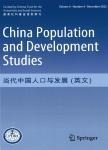Contributions by age and cause to life expectancy gap between China and South Korea,1990-2019:a decomposition analysis
作者机构:School of Sociology and Political SciencesAsian Demographic Research InstituteShanghai University99 Shanghai Rd.Shanghai 200444China International Institute for Applied Systems AnalysisWittgenstein Centre for Demography and Global Human CapitalIIASAOeAWUniversity of ViennaLaxenburgAustria
出 版 物:《China Population and Development Studies》 (当代中国人口与发展(英文))
年 卷 期:2023年第7卷第2期
页 面:160-180页
学科分类:07[理学] 0701[理学-数学] 070101[理学-基础数学]
主 题:Life expectancy gap Cause of death Aging China
摘 要:In the past 30 years,the life expectancy in China continues to rise yet at a slower pace because of,in large part,the heavy burden of chronic diseases on older age *** on data obtained from the United Nations World Population Prospects 2019 and the Global Burden of Disease Study 2019,this study applies Arriaga’s decomposition method to decompose the age/cause-specific contributions to life expectancy gap between China and South Korea during 1990-2019,which could provide understanding on mortality patterns and heavy burden by chronic disease resulting from an aging *** study has found that the life expectancy gap between these two countries for females has remained constant,while that of males has been increasing during the same *** finding is that non-communicable diseases,like cardiovascular diseases among the elderly(aged 60+),explain a large and enlarging part of the life expectancy gap between China and South Korea,especially among *** addition,maternal and neonatal disorders among children(age group 1-4ys)contribute less and less to life expectancy *** observations suggest a convergence of mortality pattern among younger age groups as well as the continued existence of substantial gaps among older age ***,given the precedent of South Korea,China should also take suicide as another issue with greater attention in the ***,this study concludes by suggesting targeted public health policies to reduce mortality in certain age groups and save more lives from certain diseases.



